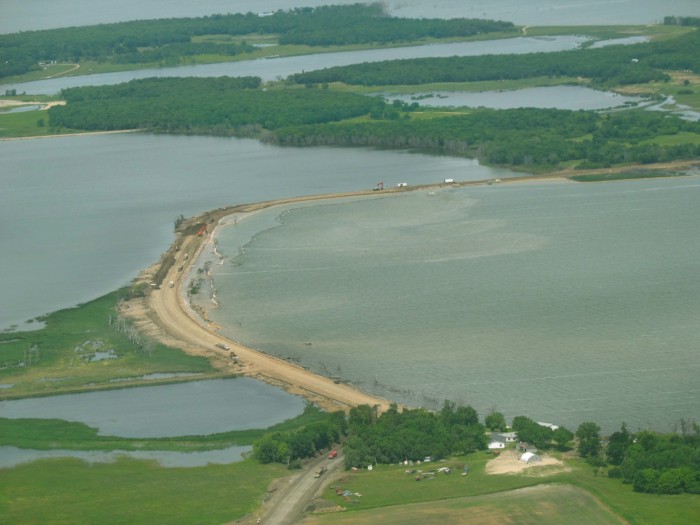Water Infrastructure

Roads Acting As Dams
Twelve miles of Bureau of Indian Affairs (BIA) roadways within The Spirit Lake Indian Reservation were converted into dams to retain the rising basin waters. The dams were compacted earth structures containing a variety of drainage and seepage control features to maintain stability and to control land-side seepage as flood-water levels rose.
The dams were constructed in three phases based on current and projected water levels. Phase timing depended on the rate that the water levels rose, with dam geometry and construction changing slightly with each phase. All design and construction elements needed to be compatible with the final design.
We were retained to provide geotechnical consulting services. Our role involved evaluating steady-state seepage, construction excavation and as-built slope stability, structure settlement, drainage collection and seepage/piping/uplift control. These dam performance aspects and properties have been evaluated using steady-state and transient finite element models. Our modeling and engineering analyses allowed us to save costs while maintaining minimum performance and stability factors of safety.
We evaluated the stability of the flood control structure under the conditions required by the Federal Emergency Management Agency-Department of Homeland Security guidelines, estimated structure settlement, and evaluated the potential for seepage through and/or below the structure. All work was performed in general accordance with Corps of Engineers and Bureau of Reclamation standards for dam design and construction.